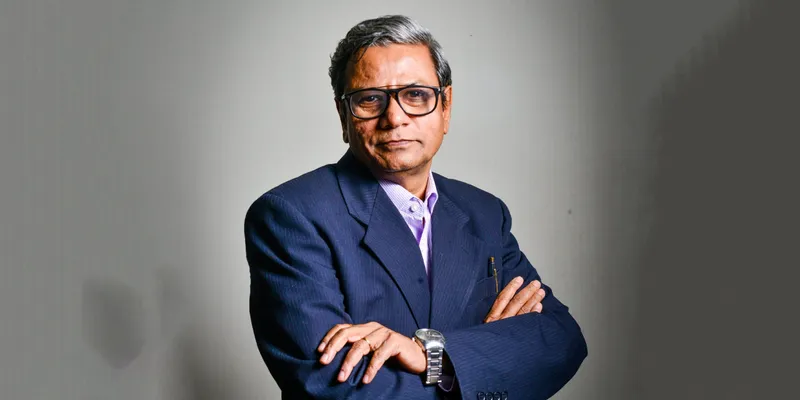Get up close and personal with India’s biggest banking men and women in Tamal Bandyopadhyay’s new book
‘Roller Coaster - An Affair with Banking’, by award-winning journalist turned author Tamal Bandyopadhyay, offers a fly-on-the-wall view of the Indian banking system and the people who essentially wrote its playbook.
Before the era of data-driven, number-reliant, performance-linked banking, there was the age of babus in Indian public sector banking who relied on signals from a goddess idol before approving loans (talk about divine intervention!).
It was an age when codewords such as ‘Punjabi food’ and ‘Gujarati thali’ occupied the place of today’s encrypted WhatsApp and Signal messages, and inane, feudalistic protocols, free gifts from Akbarally’s, and garlands bestowed upon senior bankers were the perks of being a government sector banker.
It was a wild time alright, but at least one didn’t have to worry about algorithms ruining the day!
Tamal Bandyopadhyay's book Roller Coaster - An Affair with Banking takes you on an enthralling and uncharted journey through the twists and turns of India’s banking industry—best told through the very people who called the shots: the bankers.
But how could banking ever be interesting? And how could bankers be interesting beyond the scams and scandals they’re so often part of?
That is where Bandyopadhyay’s storytelling, thanks to his two-and-a-half decades as a reporter and an editor, proves its worth.
Bandyopadhyay’s brilliance lies not in reporting the facts and nuances of Indian banking, but in peeking behind the curtain and writing about the people pulling the strings. The book, written in a very informal, conversational style, almost feels as though you were sitting down with a close friend to gossip about people you know well.
The characters—right from the chairman of prominent public sector and private banks to RBI governors—jump off the page with their little quirks and idiosyncrasies, and don’t feel far removed from some of the people you may know in your own life, or may have at least have heard of.
Like the chairman and managing director of a bank who had a kitchen help on standby to mop up the sweat from his bald pate after one too many green chillies. Or the current managing director of IDFC Bank Vaidyanathan V, who booked himself on a round-trip flight on which an investor with deep pockets was travelling, just so that he could pitch Capital First and raise funding for it.
At the beginning of the book, Bandyopadhyay dips into his journey as a reporter chasing political and cultural stories, leaving Mumbai, and then somehow finding his way back to the city as a banking reporter.

Tamal Bandyopadhyay, author of Roller Coaster
From human meatballs to human skin veils: Sayaka Murata’s Life Ceremony forces you to question your reality
It’s easy to find yourself in his story as a young journalist, arriving in a new city at the bottom rung of the editorial ladder, grappling with linguistic barriers, while familiarising himself with the names of local produce—he had to learn the hard way that snake gourd was called ‘padwal’ in Mumbai, not ‘potol’—and saving up for a nice, much-deserved beer on a Sunday afternoon.
He also talks about some of his biggest scoops and the unlikely sources they come from—overhearing two people on a flight, for instance—offering a very rare glimpse into the world of Indian journalism.
Roller Coaster is not the most sharply edited book you’ll read, but it does have a sense of pace and rhythm and a delicious underlying tension between the characters, their situations, and their circumstances—all of which make for a good read. Bandyopadhyay manages to shine the dust off of the various names and personalities who have shaped finance in India today, making them sometimes the heroes of the story and sometimes the villains too.
What stood out to me was the almost sepia-toned dive into the past. The book evokes romantic images of grey steel Godrej almirahs; green cardboard files; creaky table fans; rickety, sea breeze-worn buildings of Mumbai; red BEST buses; the casual sounds of ghungroos and tablas; and 50-paise chais—among several others. And, in the midst of all this, Bandyopadhyay stands hunched over his notebook, pages heavy and worn with random scribbles, recording time flying by.
Bandyopadhyay’s latest book is truly a treat for anyone who has ever been curious about the key players in India’s banking and financial ecosystem. It does not bog you down with turgid and sophomoric academic passages that read like a tiresome lecture. Instead, it offers you a very personal ringside view into the lives of the money men. And women. A good, light weekend read.
Edited by Swetha Kannan







